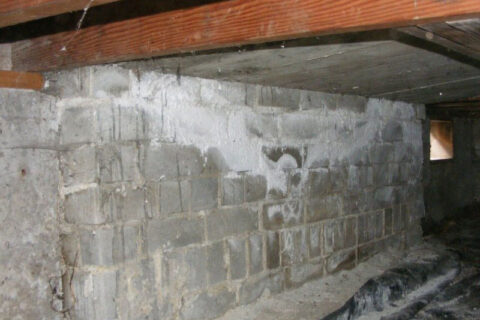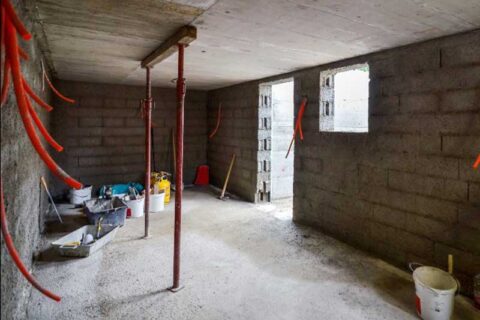Converting Your Basement to Living Space? What to Do Before Remodeling
Before you turn your basement into living space, the Environmental Protection Agency (EPA) suggests addressing six areas of concern: moisture control issues, radon, ventilation, combustion appliances, flooring and windows.
Moisture Control Issues
Moisture related issues are the biggest problems in a basement. If water problems are left alone, a small leak can turn into a major problem that could compromise the structural integrity of the house.
Mold, mildew, dry rot, termites, and other pesky moisture-related issues can be avoided when you take care of leaks, foundation cracks and high moisture content. Correcting moisture problems may be as simple as redirecting downspout runoff and re-grading the ground around the house to slopes away from the foundation.
Taking care of the outside drainage is the first step toward preventing water from entering a basement. Next is to fill all cracks and seams where water could easily enter. If water does enter the basement it will need a way out. You need an interior drainage and sump pump system with a back up sump pump to keep the basement dry.
Radon
Radon is a colorless, odorless soil gas that can be deadly. It is actually the second-leading cause of lung cancer. The only way to know if your home has dangerous levels of radon is to test for it. There is a simple and inexpensive test you can buy from your local home improvement store. If your home has a radon problem it can be fixed with a radon mitigation system. Because most systems cut into the basement floor, a radon mitigation system will be less expensive to install before you finish your basement.
Ventilation
Good ventilation is important in all areas of the house; however, it is especially important in a basement you are converting to living space. Address the ventilation in your basement before you finish it. The EPA recommends adding a mechanical ventilation system to circulate the air.
Combustion Appliances
Combustion appliances are appliances that burn fuels (gas, kerosene, oil, coal and wood) for warmth, cooking, or decorative purposes. These appliances are usually safe when they are properly vented. However, there are situations such as combustion spillage or backdrafting that these appliances can produce, and release deadly pollutants into the home.
The basement is a common place for a lot of these appliances like the furnace, water heater and clothes dryer. It is important to make sure these appliances are vented properly and safe before you add a bedroom, TV room or playroom in the basement.
Flooring
Even if you waterproof the basement, the EPA recommends that you don’t install carpet in the basement near water sources such as sinks or bathrooms. If carpets and carpet padding gets wet, it can cause mold problems or damage.
Carpet is particularly vulnerable in basements because the carpet insulates the cold, concrete slab creating the moisture in the air to condense between the carpet and the concrete. This is another way moisture could get trapped under the carpet to become a breeding ground for mold.
Windows
If you are adding a bedroom to the basement, the safety codes require each bedroom have an egress window—a way to easily escape in case of a fire. The lower ledge of the window cannot be more than 44 inches from the floor and must have a clear opening of at least 5.7 square feet. The window well itself must be a minimum of three feet away from the foundation.
Old windows are also a common source of energy loss as well as another place where moisture can enter the basement.
Replacing the windows will also add more natural light turning the once dark and gloomy basement into bright, comfortable living space.
All six areas of concern mentioned in this article are about prevention. The more time and money you spend upfront addressing these areas, the better and safer your livable basement will be.
Ready to Get Started?
Contact Us Today to Schedule a No Pressure, No Obligation, Free Quote!


